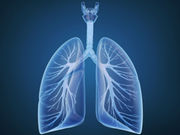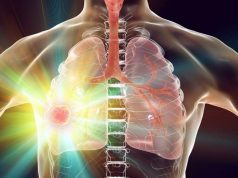Initial screens were least effective and least efficient for veterans with lowest lung cancer risk
THURSDAY, Jan. 25, 2018 (HealthDay News) — Lung cancer screening (LCS) is more effective and efficient for high-risk individuals, according to a research letter published online Jan. 22 in JAMA Internal Medicine.
Noting that the Veterans Health Affairs LCS demonstration project identified a much higher false-positive rate after initial low-dose computed tomographic screening than did the National Lung Screening Trial, Tanner J. Caverly, M.D., M.P.H., from the VA Center for Clinical Management Research in Ann Arbor, Mich., and colleagues examined how this rate influences the harm-to-benefit ratio for higher- versus lower-risk patients. A total of 2,106 patients were screened from March 31, 2005, through June 30, 2015. Patients were categorized into risk quintiles and assessed for the number of LC cases observed, screening effectiveness, and screening efficiency.
The researchers found that patients in higher quintiles of LC risk had significantly more LCs diagnosed. Initial screens were least and most effective for veterans in quintile 1 (lowest risk) and 5 (highest risk), respectively. Across risk quintiles there was no significant difference in rates of false-positive results and downstream evaluations. The increasing absolute benefit versus relatively stable harms enhanced the favorable balance of harm to benefit for higher- versus lower-risk individuals. The initial screen was least and most efficient for patients in quintile 1 and 5, respectively.
“These real-world findings reinforce the need to risk-stratify patients for LCS and provide support for personalized, risk-based harm-benefit estimates for all eligible persons during LCS decision-making,” the authors write.
One author disclosed financial ties to the pharmaceutical industry.
Abstract/Full Text (subscription or payment may be required)
Editorial (subscription or payment may be required)
Copyright © 2018 HealthDay. All rights reserved.








